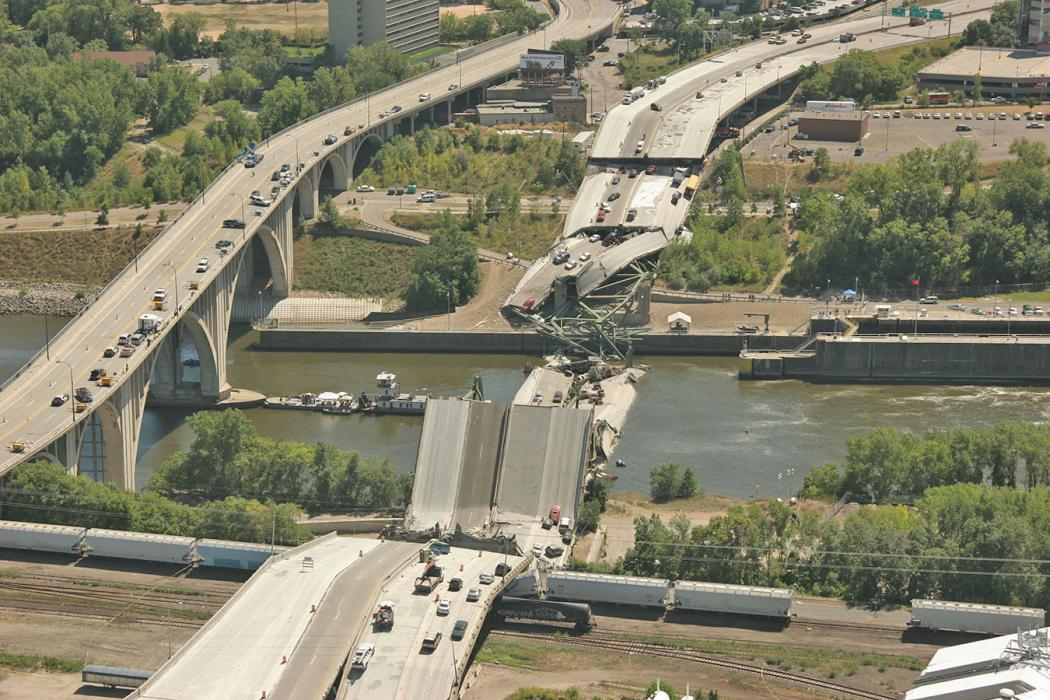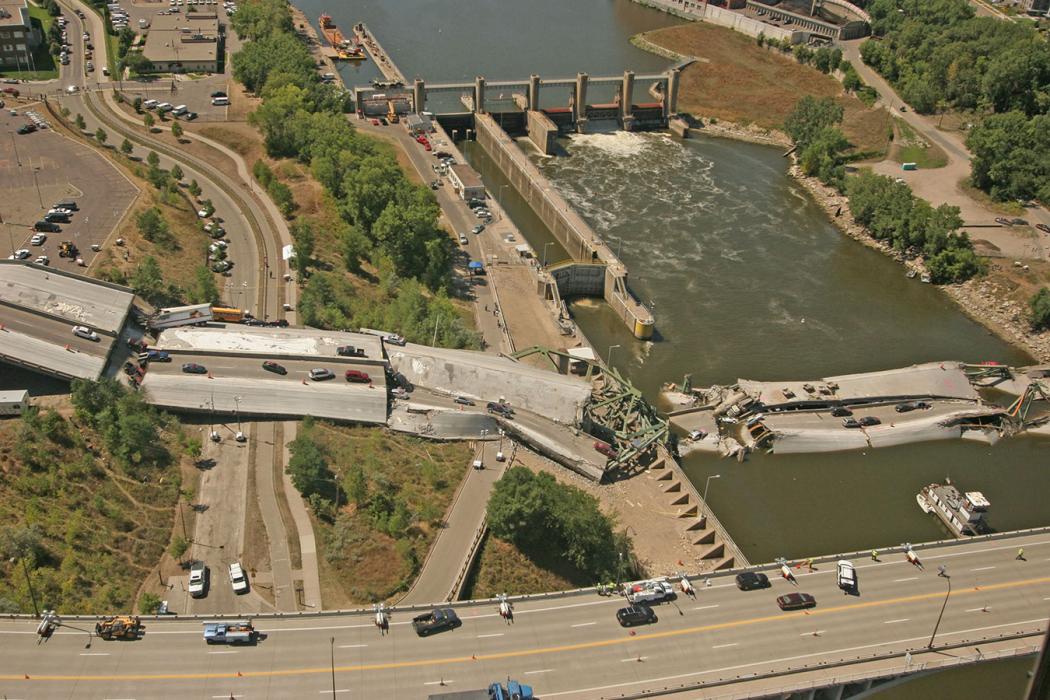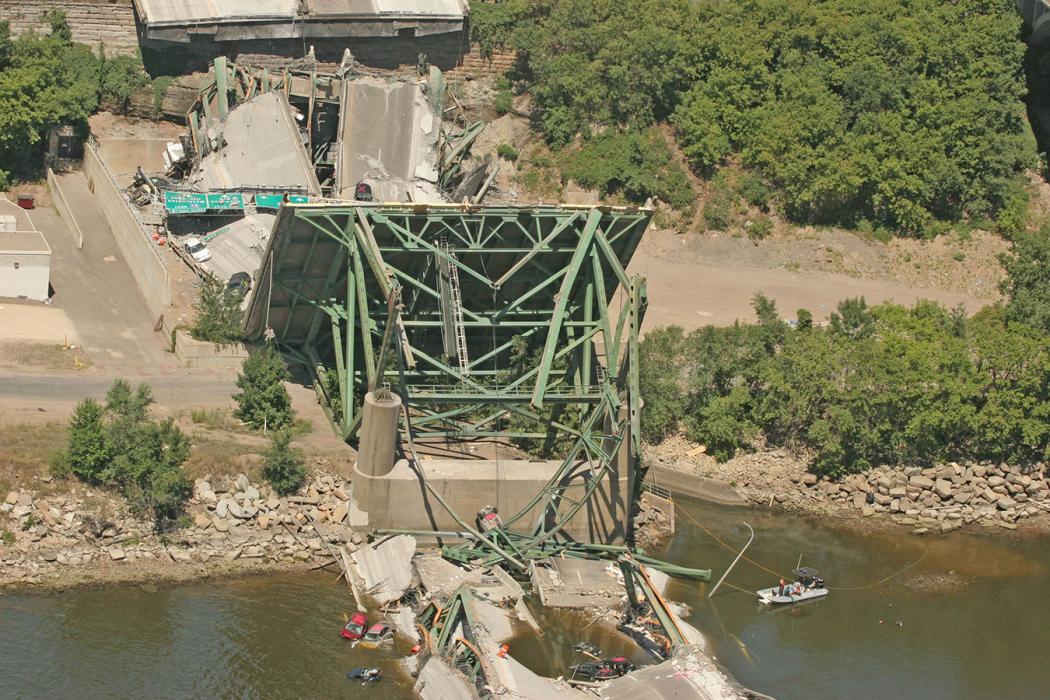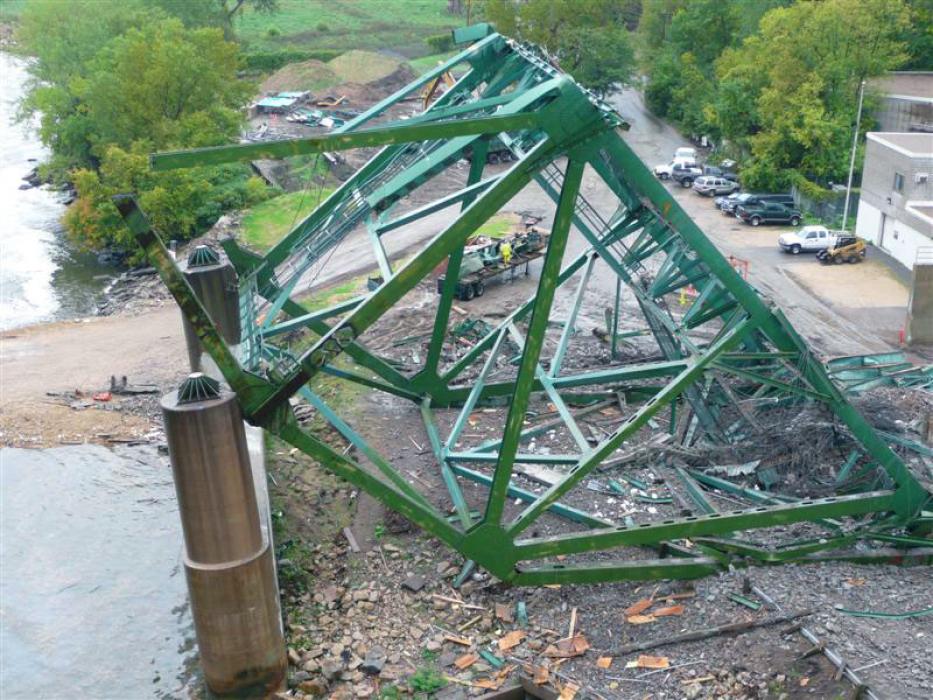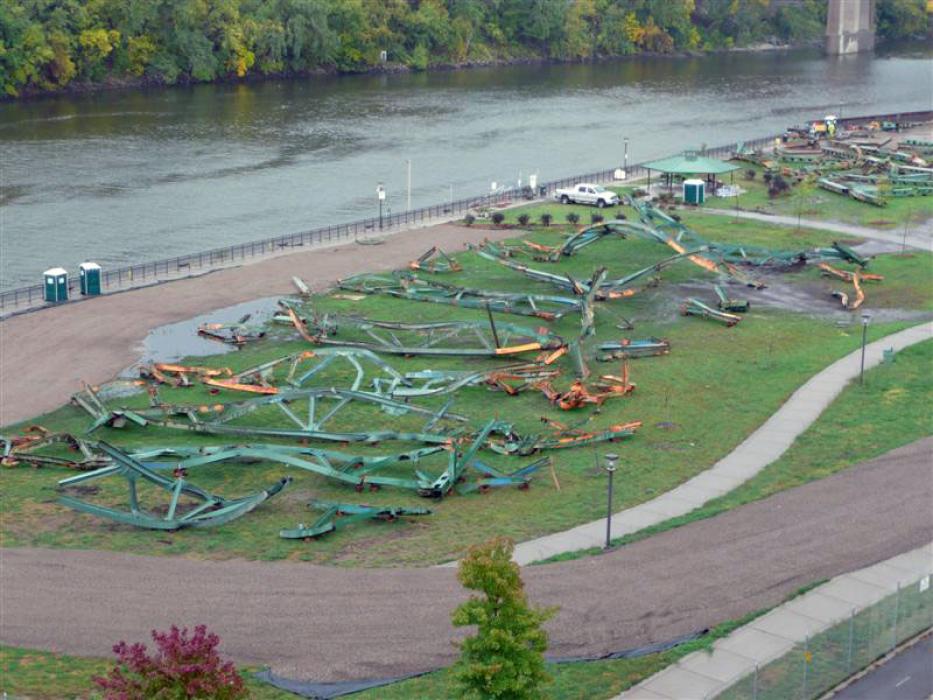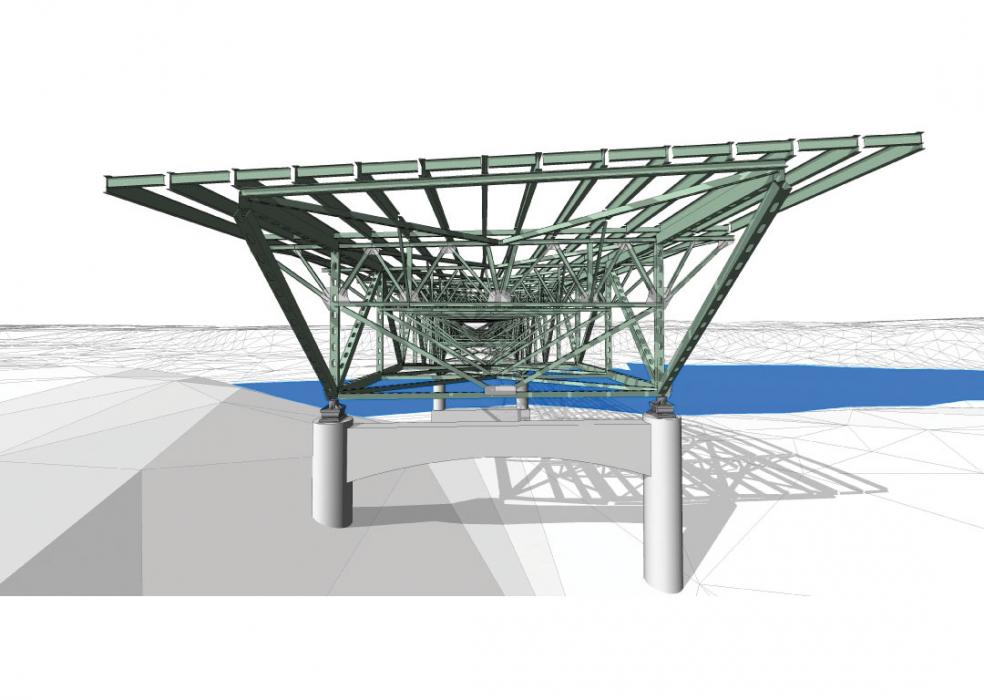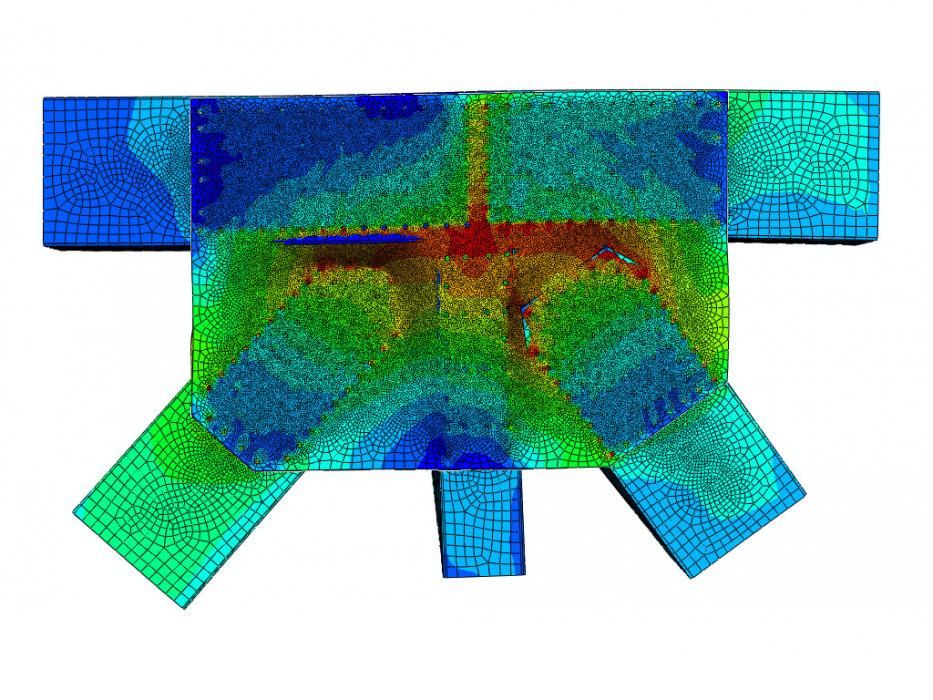I-35W Bridge Collapse
We investigated the cause of the 2007 collapse of the 1,900-foot-long Interstate Highway 35 West bridge over the Mississippi River.
Overview
During the evening rush hour on August 1, 2007, a 1,900-foot section of Interstate Highway 35 West bridge between Minneapolis and Saint Paul, Minn., collapsed into the Mississippi River, killing 13 people and injuring 145. We conducted a study to determine the cause of the collapse on behalf of a consortium of 20 Minnesota law firms representing, pro bono, more than 90 victims and their families.
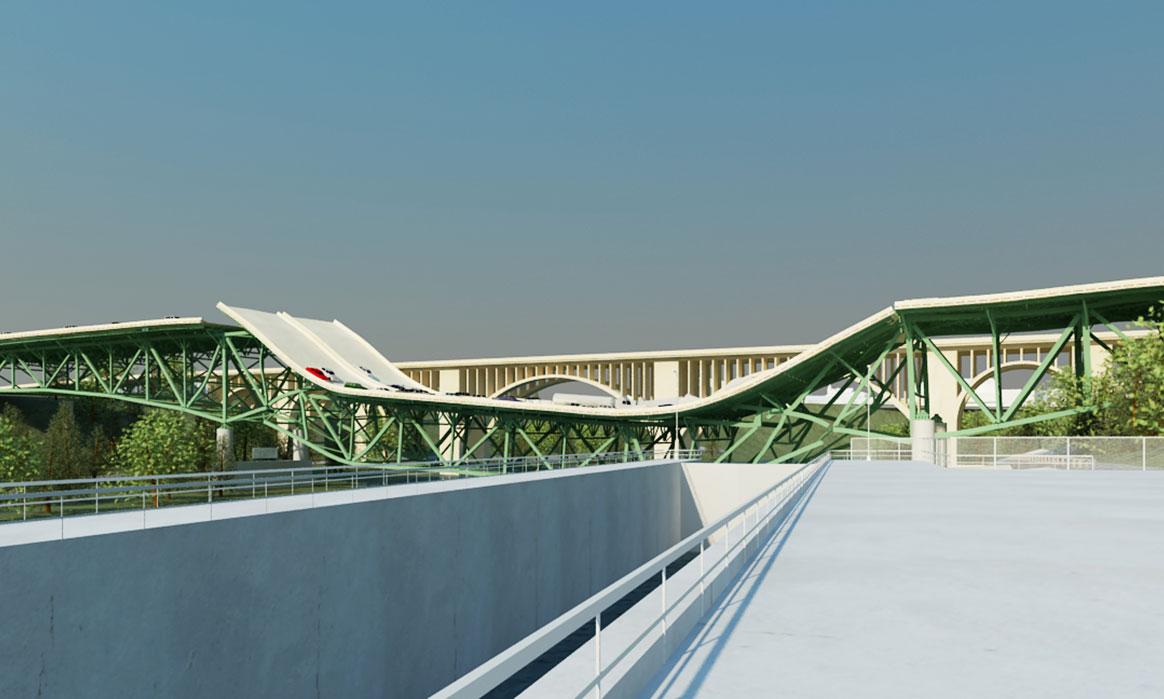
Highlights
- Our investigation included on-site observations, review of more than 50,000 documents, and detailed analysis of the entire bridge.
- Studies by the advanced analytics team included assessing the impact of fatigue, temperature and load redistributions on critical bridge members subjected to static and dynamic loads. A key component of the work was the construction of a forensic information model, an interactive, computer graphic model of the bridge that enabled engineers to catalog and access available information on each bridge component.
- Our findings pointed to failure of bearings to allow the normal movement of the bridge associated with thermal expansion. The resulting build-up of stress led to the collapse.
- Our analysis was completed by the one-year anniversary of the event, when the National Transportation Safety Board had to report its findings.


